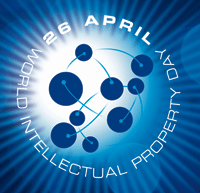
Innovation – Linking the World
World Intellectual Property Day

Director General Francis Gurry
(Dhillon Photographics)
Message from Director General Francis Gurry
Relatively few decades ago, the world remained vast and largely unknown for most people. Travel was costly and long. Knowledge was paper-based and hard to share. Telephone service was, in many places, non-existent. Outside of large cities, access to foreign culture and the arts was limited.
Rapid innovation and its global adoption has transformed our outlook. We are now linked – physically, intellectually, socially and culturally – in ways that were impossible to imagine. We can cross continents in a few hours. From almost anywhere on the planet, we can access information, see and speak to each other, select music, and take and send photographs, using a device small enough to fit in the palm of a hand.

This universal connectivity, sustained by the Web and wireless technology, has huge implications for the future. With the “death of distance”, we are no longer limited by physical location – and the benefits are legion.
Web-based learning frees intellectual potential in previously isolated communities, helping to reduce the knowledge gap between nations. Sophisticated video-conferencing techniques reduce business travel, diminishing our carbon footprint. Mobile telephony, already used by over half the world’s population, transforms lives and communities: Solar powered mobiles are helping track disease, run small businesses, and coordinate disaster relief in areas previously out of reach.
Rapid data management and exchange speed the innovation cycle, facilitating collective innovation and promoting mutually beneficial collaboration between companies, research institutions and individuals. At the same time, digital technologies are enabling like-minded people to create virtual platforms from which to work on common projects and goals – such as WIPO’s web-based stakeholders’ platform, aimed at facilitating access to copyrighted content for the estimated 314 million persons with visual and print disabilities world wide.
Innovative technologies are creating a truly global society. The intellectual property system is part of this linking process. It facilitates the sharing of information – such as the wealth of technological know-how contained in WIPO’s free data banks. It provides a framework for trading and disseminating technologies. It offers incentives to innovate and compete. It helps structure the collaboration needed to meet the daunting global challenges, such as climate change and spiraling energy needs, confronting us all.
WIPO is dedicated to ensuring that the intellectual property system continues to serve its most fundamental purpose of encouraging innovation and creativity; and that the benefits of the system are accessible to all – helping to bring the world closer.
_____________________________________
The WIPO Magazine is intended to help broaden public understanding of intellectual property and of WIPO’s work, and is not an official document of WIPO. The designations employed and the presentation of material throughout this publication do not imply the expression of any opinion whatsoever on the part of WIPO concerning the legal status of any country, territory or area or of its authorities, or concerning the delimitation of its frontiers or boundaries. This publication is not intended to reflect the views of the Member States or the WIPO Secretariat. The mention of specific companies or products of manufacturers does not imply that they are endorsed or recommended by WIPO in preference to others of a similar nature that are not mentioned.